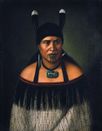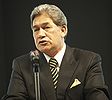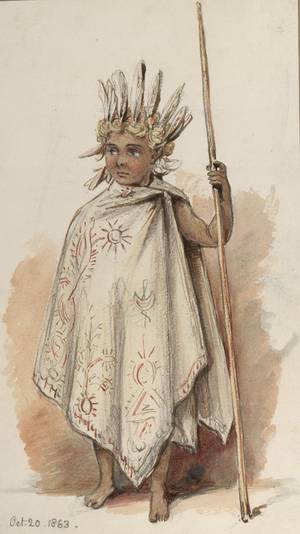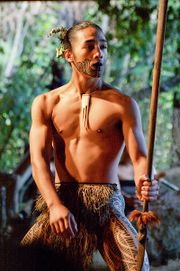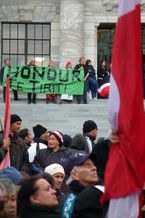ماوري
- للشعب الماوري في جزر كوك، انظر :جزر كوك.
هونى هكى وزوجته • Hinepare of Ngāti Kahungunu • Tukukino • Te Rangi Hīroa • Meri Te Tai Mangakahia • Apirana Ngata • Keisha Castle-Hughes • ونستون پيترز • ستيفن كرني | |
| التعداد الإجمالي | |
|---|---|
| نحو 790,000 | |
| المناطق ذات التواجد المعتبر | |
| 598,605 (تعداد 2013)[1] | |
| 155,000 (تقدير 2011)[2] | |
| نحو 8,000[3] | |
| < 3,500[4] | |
| 1,305[5] | |
| مناطق أخرى | نحو 8,000[3] |
| اللغات | |
| ماوري، الإنگليزية | |
| الديانة | |
| المسيحية، ديانة الماوري | |
| الجماعات العرقية ذات الصلة | |
| شعوب الپولينيزية الأخرى، الشعوب الأسترونيزية | |
الماوري (Māori) هم السكان الأصليون لنيوزيلندا وجزر كوك. قدم أسلافهم الپولينيزيون إلى نيوزيلندا بين عامي 800 و1300، من الجزر الپولينيزية الأخرى. في اللغة الماورية، كلمة "ماوري" تعني "العادي" أو "المألوف". اللغة الماورية مرتبطة بشكل وثيق باللغات الأخرى المستخدمة في الجزر الواقعة شرق ساموا في جنوب المحيط الهادي، مثل التاهيتية والهاوائية.
في بداية القرن التاسع عشر، ومع انتهاء حروبهم ضد الاحتلال الأوروبي، قد عددهم بحوالي 100 ألف نسمة. لاحقاً، تضائل عددهم إلى 40 ألف نسمة. يعيش اليوم حوالي 600 ألف نسمة من الماوري في نيوزيلندا. يحافظ الماوريون على عاداتهم وتقاليدهم القديمة، مما يميزهم عن عامة سكان نيوزيلندا، ولكن في نفس الوقت لديهم ممثلين في البرلمان، كما يشاركون (بدرجة أقل) في معظم قضايا البلاد.
أصل الكلمة
في اللغة الماورية كلمة الماوري تعني" عاديا "،"طبيعية " أو "عادية ". في الاساطير والتقاليد الشفوية، ميزت كلمة بشري البشر العاديين، tāngatamāori من الدين الماوري والمشروبات الروحية ( wairua )
التاريخ
الأصول
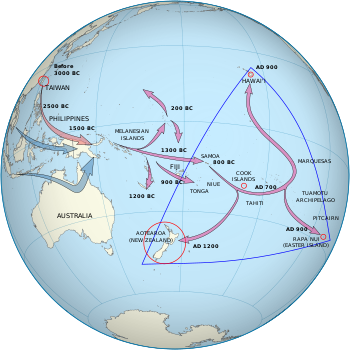
الفترة العتيقة (1280–1500)
الفترة الكلاسيكية (1500–1642)
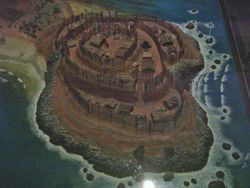
الاتصال الاوروبي المبكر (1642–1840)
المعاهدة البريطانية مع شعب نيوزيلندا
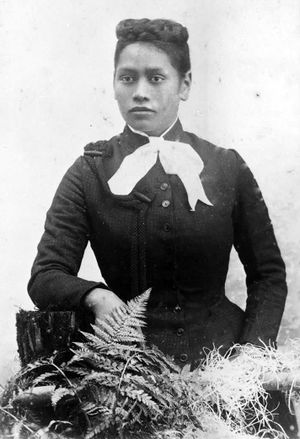
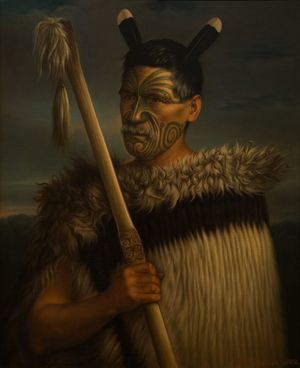
الانحدار والإحياء
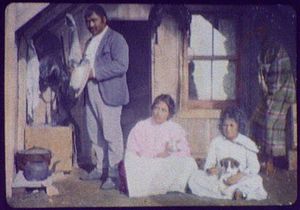
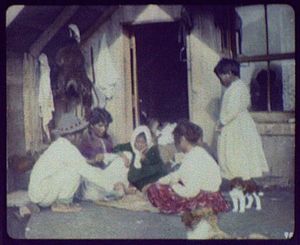
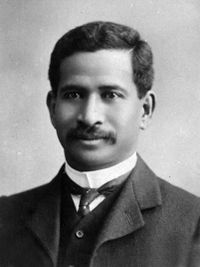
During WW2 the government decided to exempt Māori from the conscription that applied to other citizens. The Māori volunteered in large numbers, forming the 28th or Māori Battalion, which performed creditably, notably في كريت، شمال أفريقيا وإيطاليا. Altogether 16,000 Māori took part in the war. 3,600 served in the Māori Battalion, the remainder serving in artillery, pioneers, home guard, infantry, airforce, and navy. 204,000 New Zealanders served during WW2. Māori, including Cook Islanders, made up 12% of the total force.
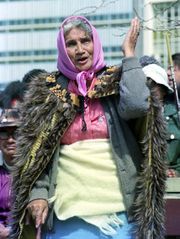
الثقافة
الثقافة التقليدية
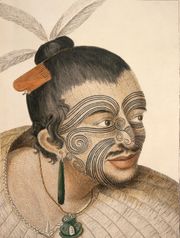
المعتقدات والدين
اللغة
متشابهة بدرجة كبيرة مع المالايو
المجتمع
التطور التاريخي
مارائ و هاپو و إيوي
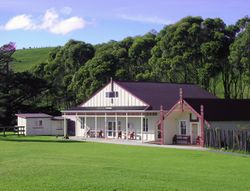
العلاقات العرقية
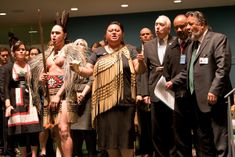
التمثيل السياسي
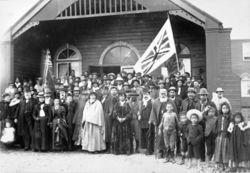
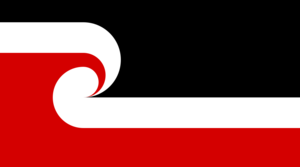
ملاحظات
- ^i : Māori has cognates in other Polynesian languages such as Hawaiian maoli, Tahitian mā'ohi, and Cook Islands Maori māori which all share similar meanings.
- ^ii : The orthographic conventions developed by the Māori Language Commission (Te Taura Whiri i te Reo Māori) recommend the use of the macron (ā ē ī ō ū) to denote long vowels. Contemporary English-language usage in New Zealand tends to avoid the anglicised plural form of the word Māori with an "s": Māori generally marks plurals by changing the article rather than the noun, for example: te waka (the canoe); ngā waka (the canoes).
- ^iii : In 2003, Christian Cullen became a member of the Māori rugby team despite having, according to his father, about 1/64 Māori ancestry.[7]
- ^iv : Although, as noted elsewhere in this article, evidence is increasingly pointing to 1280 as the earliest date of settlement.
مراجع
الهامش
- ^ Statistics New Zealand. "2013 Census QuickStats About Māori". Retrieved 20 December 2013.
- ^ Hamer, Paul (2012), Māori in Australia: An Update from the 2011 Australian Census and the 2011 New Zealand General Election
- ^ أ ب Walrond, Carl (4 March 2009). "Māori overseas". Te Ara: The Encyclopedia of New Zealand. Retrieved 7 December 2010.
- ^ New Zealand-born figures from the 2000 U.S. Census; maximum figure represents sum of "Native Hawaiian and Other Pacific Islander" and people of mixed race. United States Census Bureau (2003)."Census 2000 Foreign-Born Profiles (STP-159): Country of Birth: New Zealand" (PDF). (103 KB). Washington, D.C.: U.S. Census Bureau.
- ^ Statistics Canada (2003).(232), Sex (3) and Single and Multiple Responses (3) for Population, for Canada, Provinces, Territories, Census Metropolitan Areas and Census Agglomerations, 2001 Census – 20% Sample Data. Ottawa: Statistics Canada, Cat. No. 97F0010XCB2001001.
- ^ New Zealand — Maori Flags
- ^ "Uncovering the Maori mystery". BBC Sport. 5 June 2003.
الروابط الخارجية
- ماوري at the Open Directory Project
- Article on Māori, Te Ara – The Encyclopedia of New Zealand
- ماوري at the Open Directory Project

